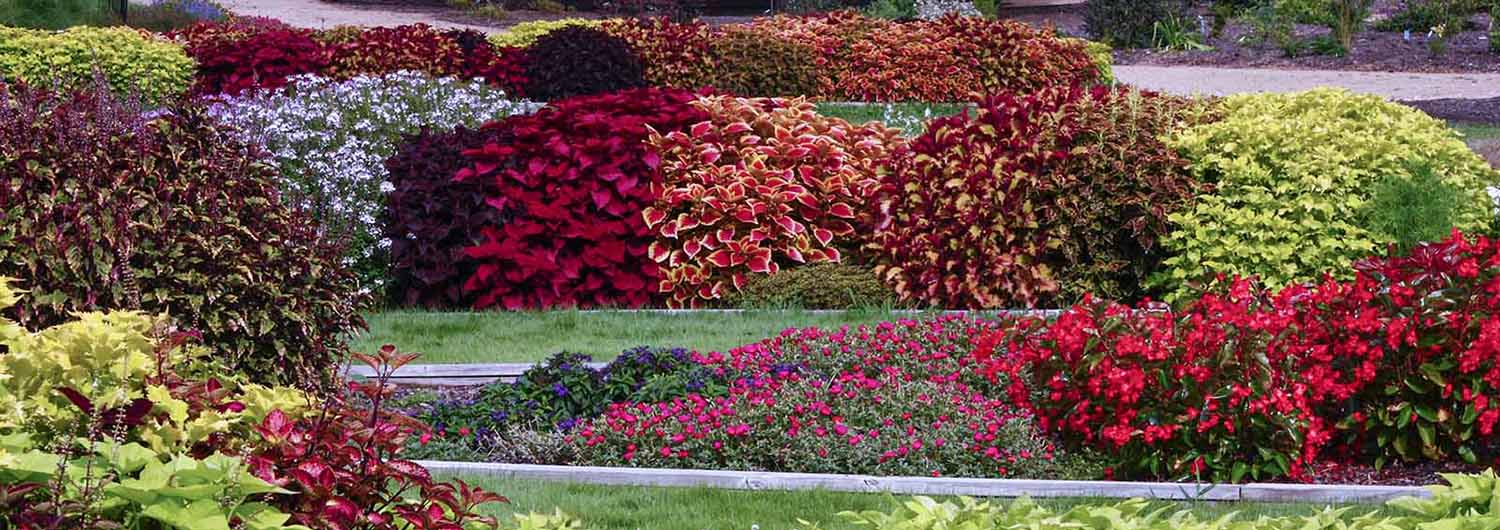Summer Color Trials Report
North Carolina State University
Raleigh, North Carolina
2013
Ted Bilderback
Director
Bernadette Clark
Agricultural Research Technician
Department of Horticultural Science
JC Raulston Arboretum
Table of Contents
- Top Performers
- General Introductory Notes and Acknowledgements
- Understanding Our Data
- Climate Graphs
- Variance
- Plant Material Sources
- Reports
- Top 10
- Best of Breed
- Leaders of the Pack
- Early Season Leaders of the Pack
- Late Season Leaders of the Pack
- Cultivar Series Summaries
- Weekly Ratings
Top Performers
Beds
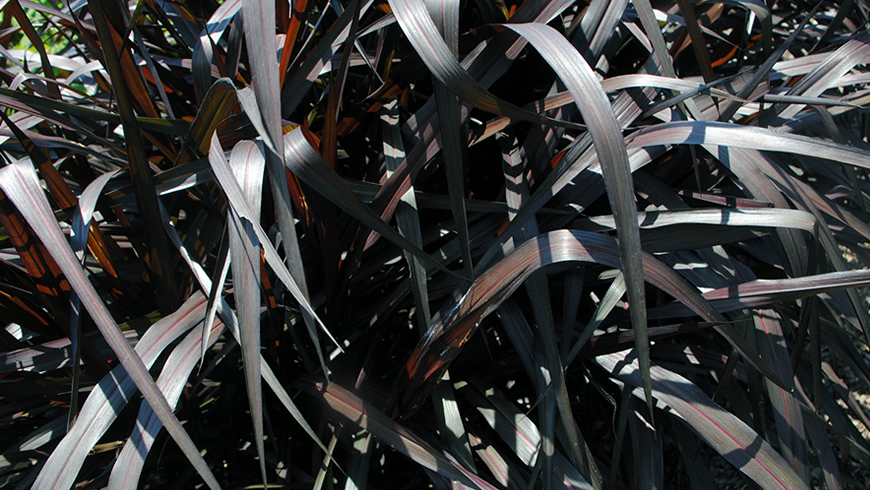
Pennisetum purpureum 'Tift 8' (Vertigo®)
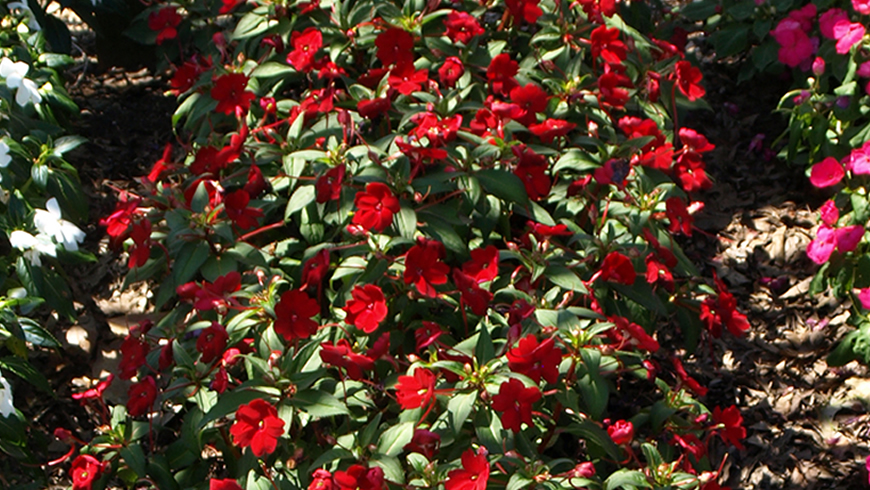
Impatiens (SunPatiens® Compact Red)
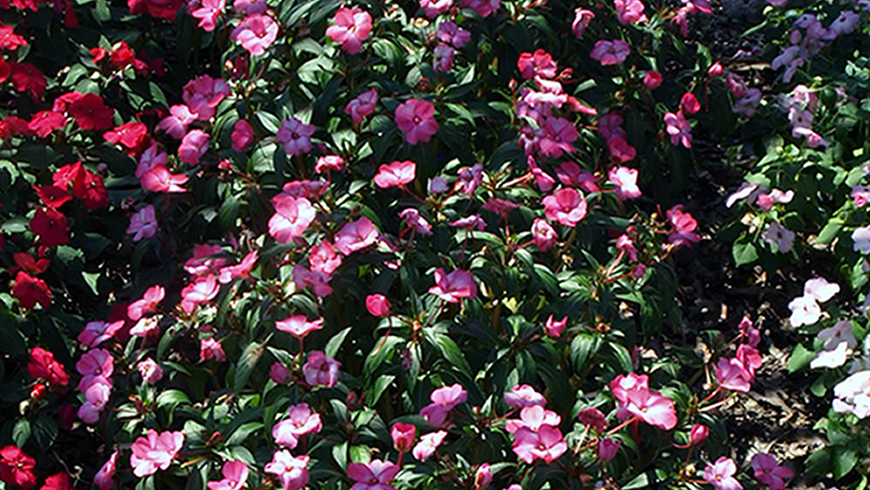
Impatiens (SunPatiens® Spreading Pink Flash)
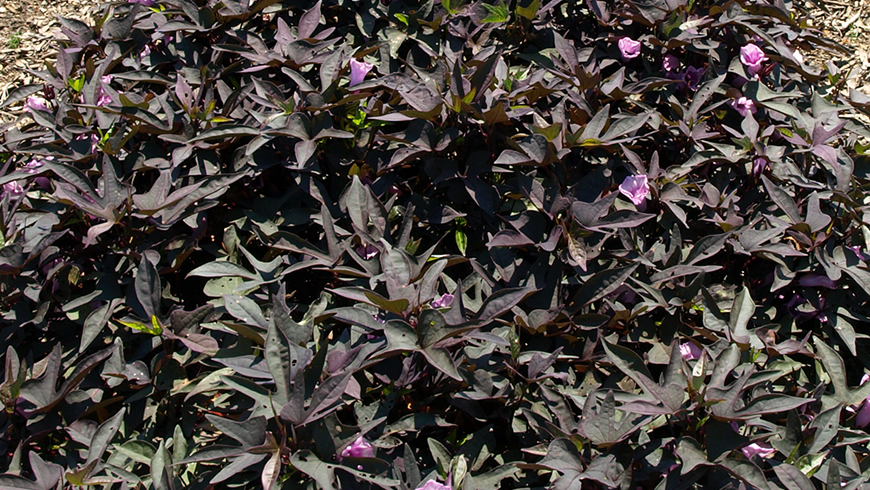
Impomoea batatas (FloraMia Nero)
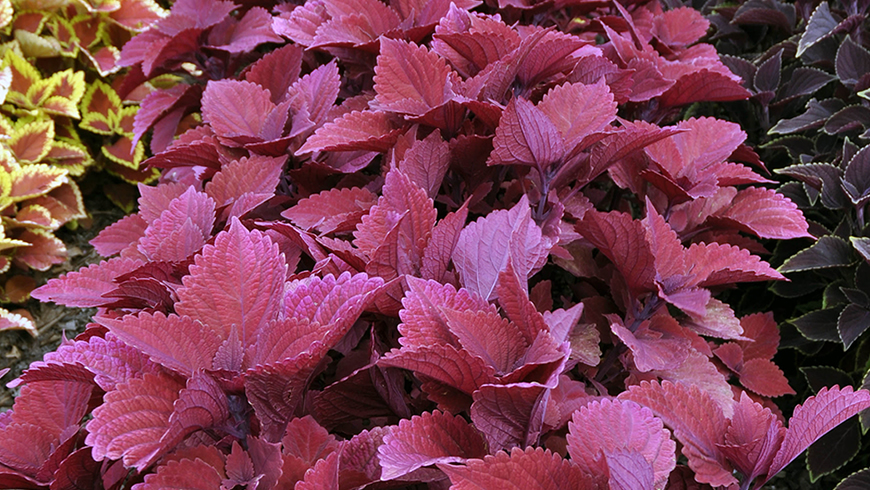
Solenostemon 'UF0646' (Redhead™)
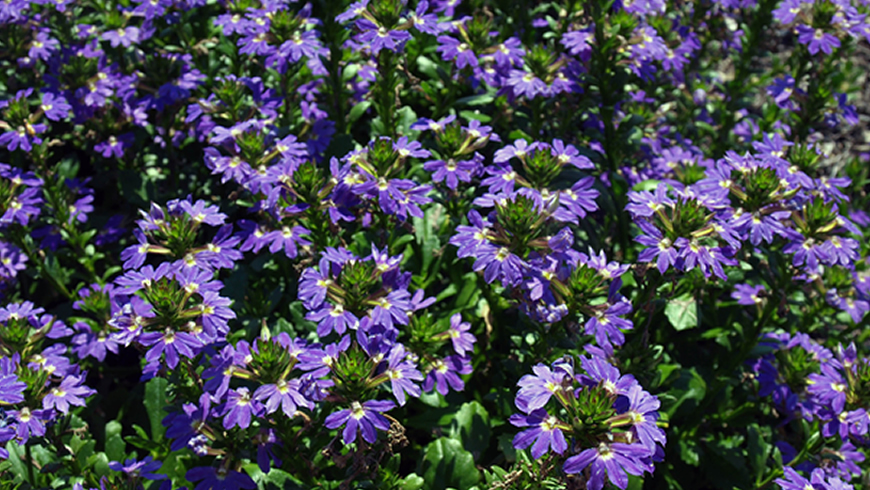
Scaevola aemula (Scala Blue)
Containers
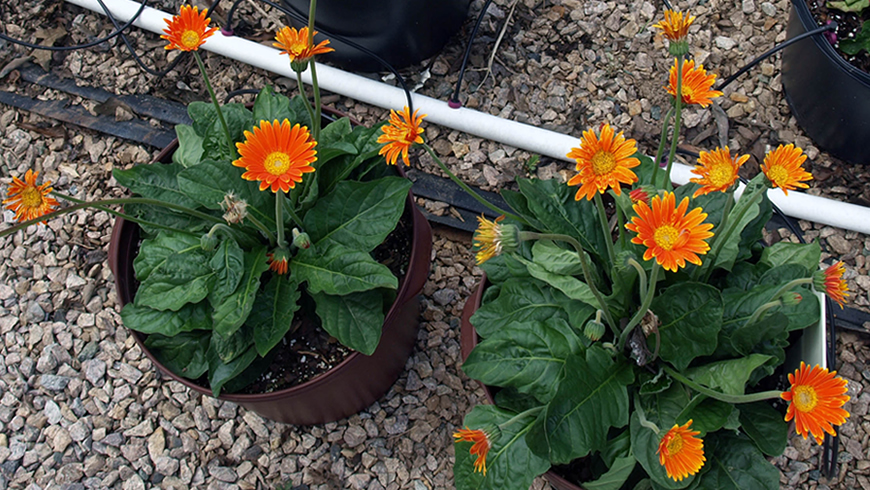
Gerbera 'Garoran' (Garvinia® Orangina)

Gerbera jamesonii (Cartwheel® Strawberry Twist)
Hanging Baskets

Pelargonium 'Amri Trared' (Calliope® Dark Red)

Pelargonium (Calliope® Burgundy)
General Introductory Notes and Acknowledgements
The Trial Gardens for seasonal color plant materials are located at NC State University within the JC Raulston Arboretum (JCRA) in Raleigh. The JCRA is a ten and a half acre site administered by the Department of Horticultural Science and located on 35° 47'N latitude, longitude 78° 42' W, with an elevation of 400 feet.
Plants to be entered into our trials are received in a variety of ways. About one third are germinated from seeds while the remainder originate as rooted cuttings or established cell plugs. Virtually all are grown within controlled greenhouse environments prior to placement in protected outdoor structures for hardening off. They were planted into their permanent trial bed locations on April 23, 2013. The predominant plant spacing in the bed trials was 18 inches × 24 inches (in-row × between-row spacing). Seven plants of each entry were used to evaluate landscape performance. Hanging baskets contained three plants and were replicated three times. Containers had one plant each and were replicated three times. All ratings were taken weekly.
Acknowledgements
We thank the following companies for their support of material donations:
- BASF, 26 Davis Drive, Research Triangle Park, NC 27709
- Harrell's, 509 3rd Street, Norway, SC 29113
- Fafard, P.O. Box 26, Anderson, SC 29622
We are especially thankful to other departmental staff and the volunteers of the JC Raulston Arboretum who assisted in transplanting and maintaining the annual beds throughout the growing season … we couldn't have done it without you all!
Understanding Our Data
Number of Weeks in Flower
This is recorded as the total number of weeks in flower throughout the entire season. It should give you an idea of whether or not a plant is best used for the whole season or as a "fill-in" for special displays. Obviously, those species grown for foliage interest alone, e.g. Acalypha, may score poorly in this column and should not be rejected based on this value alone!
Weekly Ratings
Plants were given a visual rating weekly by the same person beginning May 16, 2013 (about three weeks after planting) through September 30, 2013. The overall rating was based on plant performance and appearance, including floriferousness, plant size and shape, and freedom from insect and disease problems. The rating scale ranged from 1 (very poor) to 5 (excellent) with 0.5 unit increments possible; a 0 rating indicated that all plants of the cultivar trial died.
The best way to really evaluate our trials is to come in person. The JCRA is open 365 days a year.
Summaries of Weekly Ratings
The first statistic that readers run to is likely the "all season average." This value represents overall performance for the entire summer season. However, realizing that there are many species/cultivars which may do better in one part of the growing season versus another, we also provide an "early season average" and "late season average" for each entry. The former is the average of the first half of the evaluation period and the latter represents the end of the season. This information may be useful in planning short term plantings with high impact as well as for studying temperature preferences, life cycle changes, and/or the impact of photoperiod on plant performance. The "number of weeks rated above 3" gives you an idea of how consistently throughout the season an entry is an exemplary performer.
The Lists You'll Find In This Report
We started presenting the data in three separate categories in 2012: beds, containers, and hanging baskets. This allows a truer, more equitable way of comparing the entries. Each category will have the individual breakout of data, just like before. For example, you will be able to view a Top 10 listing for beds, containers, and hanging baskets entries.
"The Top 10" (beds, containers, and hanging baskets) – this list shows the species/cultivars with the top ten "All Season Averages." These were our best overall performers. When the list exceeds ten, there were ties.
"Leaders of the Pack" (beds, containers, and hanging baskets) – lists all species/cultivars with an "All Season Average" of 3.5 or better. We consider this the arbitrary cutoff rating for a "significant performer" in Raleigh. This list shows all your best choices for planting, listed by plant name.
"Leaders of the Pack – Early Season" (beds, containers, and hanging baskets) – this shows entries with "Early Season Averages" of 3.5 or better based on the first half of the evaluation period. This group may prefer cooler temperatures or only have a relatively short ornamental life, and might not show up on the "Leaders of the Pack" list above.
"Leaders of the Pack – Late Season" (beds, containers, and hanging baskets) – this shows entries with "Late Season Averages" of 3.5 or better based on the end of the season evaluations. They may prefer very warm temperatures or flower as daylengths start to shorten, again sometimes precluding them from inclusion on the overall "Leaders of the Pack" list.
"Best of Breed" (beds, containers, and hanging baskets) – shows the best performing cultivars in each species.
"Summary by Series" (beds, containers, and hanging baskets) – groups the information for cultivar series where appropriate. This can be a quick reference for related cultivars as well as a handy tool to judge the general performance of an entire series offered by a breeder/company.
"Weekly Ratings" (beds, containers, and hanging baskets) – evaluation given for each entry on a weekly basis.
Want Additional Copies of This Report?
Visit our Web site and help yourself!
www.ncsu.edu/jcraulstonarboretum/
Once at our Web site, be sure to subscribe to the Cuttings from the JC Raulston Arboretum to receive free, periodic updates from the JC Raulston Arboretum via e-mail, complete with digital images!
The Average Monthly Precipitation and Temperature for the Summer 2013 Trials
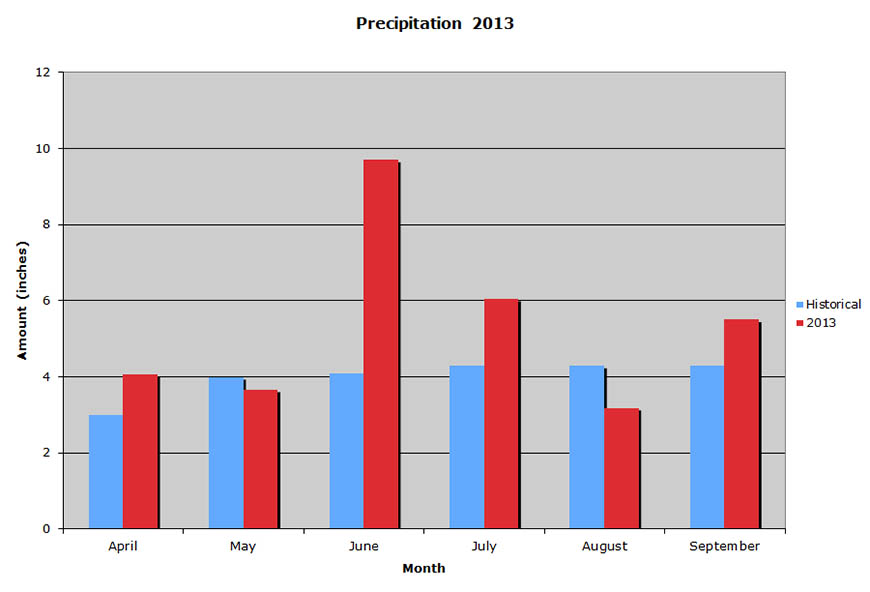

The weather temperatures for us this summer were milder than normal, not the usual extremes we endure. We experienced heavier than normal rainfall and cloudier conditions. Rain totals for this six month period exceeded the norm by 8.2". While some of our plants tolerated the soggy conditions, others struggled. We experienced our first 90°F day on June 12 which was very late for our area. Our hottest temperature (95°F) occurred on August 12.
Variance
Variance: The Best of Uniformity
Sometimes I think that the one number most often overlooked in our report is the variance. Go to the "Leaders of the Pack" data tables and look for its column. The term itself may be intimidating in light of its mystery, but need not be as it can be most informative. Simply put, the lower the variance, the most alike all plants are in the group evaluated, and hence the greater the uniformity. For so many in the commercial landscaping sector, they live and die by uniformity because appearance can be everything. So, by using a selected variance value of 0.1 as our very tough cut-off, we can really see which plants are setting the standard for superb uniformity. In many cases our results have confirmed some excellent reputations, for others, it's a first time notice.
Variance: All Over the Page
Whereas small variance values indicate excellent uniformity, the opposite can point out cultivars with a "mind of their own!" They are not necessarily a poor choice, just not ruler perfect. In this case, plants with variance values of 1.0 or more were highlighted for great differences observed during the season. To be fair, there are many reasons for a lack of uniformity, most likely of which would simply be the result of our normal or extreme weather.
Seed and Plant Material Sources
Please get in touch with these companies if you have specific questions regarding individual species and cultivars.
Seed and Plant Material Sources
All-America Selections, 1311 Butterfield Road, Suite 310, Downers Grove, IL 60515-5606
Ball FloraPlant, 622 Town Road, West Chicago, IL 63185
Ball Ingenuity, P.O. Box 335, West Chicago, IL 60185
Ernst Benary, 2759 Wagner Court, Suite C, Dekalb, IL 60115
Burpee Home Gardens, P.O. Box 335, West Chicago, IL 60185
Dummen USA, West Layfayette, IN 47906
Florist Holland BV, P.O. Box 3, 1430 AA Aalsmeer, The Netherlands
Kieft-Pro-Seeds, P.O. Box 335, West Chicago, IL 60185
North Carolina Commercial Flower Growers, P.O. Box 58220, Raleigh, NC 27658
PanAmerican Seed, P.O. Box 335, West Chicago, IL 60185
Pleasant Acres Nursery, 5836 Breezy Pines Lane, Holly Springs, NC 27540
Proven Winners, 1021 River Ridge Lane, Saint Thomas, MO 65076
Sakata Seed America, 18095 Serene Drive, Morgan Hill, CA 95037
Selecta First Class, P.O. Box 335, West Chicago, IL 60185
Syngenta Flowers, 6899 Winchester Circle, Suite 102, Boulder, CO 80301

